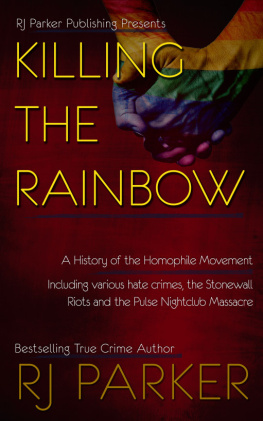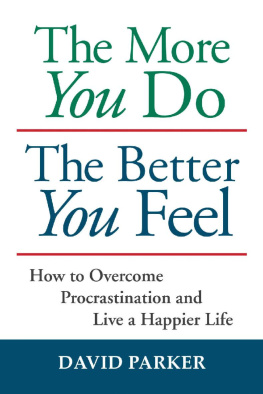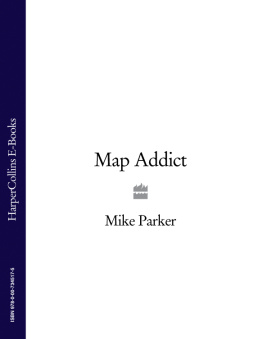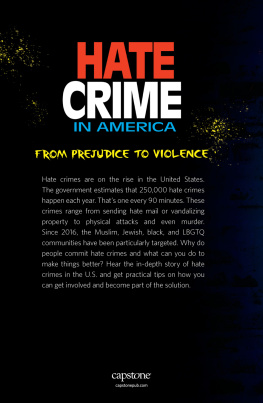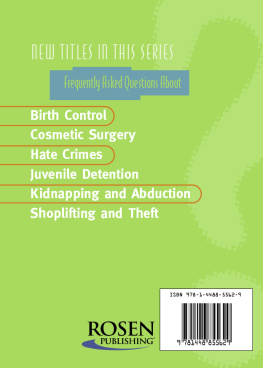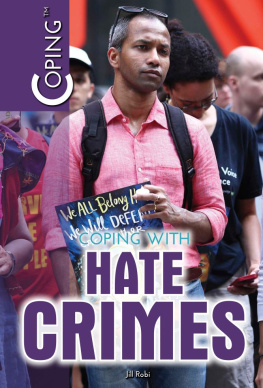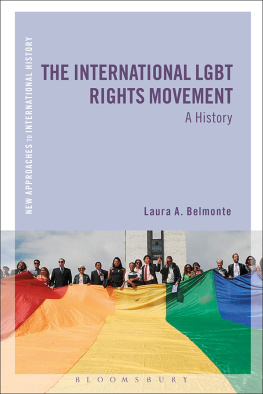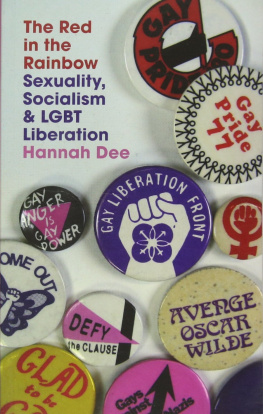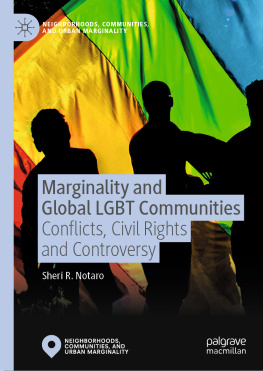Parker - Killing the rainbow : violence against LGBT
Here you can read online Parker - Killing the rainbow : violence against LGBT full text of the book (entire story) in english for free. Download pdf and epub, get meaning, cover and reviews about this ebook. City: Toronto;Ontario;United States, year: 2016, publisher: RJ Parker, genre: Religion. Description of the work, (preface) as well as reviews are available. Best literature library LitArk.com created for fans of good reading and offers a wide selection of genres:
Romance novel
Science fiction
Adventure
Detective
Science
History
Home and family
Prose
Art
Politics
Computer
Non-fiction
Religion
Business
Children
Humor
Choose a favorite category and find really read worthwhile books. Enjoy immersion in the world of imagination, feel the emotions of the characters or learn something new for yourself, make an fascinating discovery.
Killing the rainbow : violence against LGBT: summary, description and annotation
We offer to read an annotation, description, summary or preface (depends on what the author of the book "Killing the rainbow : violence against LGBT" wrote himself). If you haven't found the necessary information about the book — write in the comments, we will try to find it.
Killing the rainbow : violence against LGBT — read online for free the complete book (whole text) full work
Below is the text of the book, divided by pages. System saving the place of the last page read, allows you to conveniently read the book "Killing the rainbow : violence against LGBT" online for free, without having to search again every time where you left off. Put a bookmark, and you can go to the page where you finished reading at any time.
Font size:
Interval:
Bookmark:
Killing TheRainbow
Violence AgainstLGBT
by RJ Parker
ISBN-13: 978-1987902105
ISBN-10: 1987902106
Copyright and Published
by RJ Parker Publishing forSmashwords
Copyrights
This book is licensed for yourpersonal enjoyment only. All rights reserved. No part of thispublication can be reproduced or transmitted in any form or by anymeans without prior written authorization from RJ Parker Publishing and Smashwords. The unauthorizedreproduction or distribution of a copyrighted work is illegal.Criminal copyright infringement, including infringement withoutmonetary gain, is investigated by the FBI and is punishable byfines and federal imprisonment.
The lesbian gay bisexual andtransgender (LGBT) community has faced violence, hate andpersecution for a very long time. Gay men, lesbians, transgender orintersex people have been targeted in a number of violent crimecases over the years. Usually, the perpetrators of these hatecrimes are fanatics or homophobes who believe that these peopledefy the heteronormative gender roles and, hence, are not fit to bepart of the society.
Various acts of violence involvingassault, torture, harassment, and sometimes even murder, have beencarried out against members of the LGBT community. Other than that,homosexuals, bisexuals and transgender people have also facedconstant discrimination in their everyday lives on the basis oftheir sexual orientation. This discrimination against members ofthe LGBT community stems from religious beliefs, political views,bias or even internal fear.
The hatred and discrimination whichthese people experienced over the last fifty years or so, led tomany of them losing their lives as a result of physical abuse. Eventoday, when the situation has improved and homosexuality isaccepted in almost all Western countries, members of the LGBTcommunity still get targeted in hate crimes.
According to recent statistics, theFederal Bureau of Investigation (FBI) revealed that more than 20percent of the hate crimes that were reported to the authoritieswere committed on the basis of perceived sexualorientation.
In order to explore this in moredetail, lets go back to the beginning.
What exactly is a hatecrime?
Basically, a hate crime is any actinvolving abuse, discriminatory behavior and prejudice againstpeople because of their identity, religion, caste, creed or color.Victims are selected on the basis of their beliefs or orientation,and sometimes even due to general perception.
For decades, LGBT people have beenvictimized in numerous hate crimes all across the globe. While thesituation may have changed in the Western world, there are stillsome countries in the Middle East and Africa where homosexualactivities are punishable by death.
In countries where the Islamicideology is dominant, homosexuality in particular is notacceptable. This is why they categorize any acts involving suchactivities as criminal and deserving of maximum punishment.Sometimes, however, the state may just fine or imprison theimplicated persons. Homosexuality, often considered as sodomy,remains the most prominent offense which is criminalized in anumber of Asian and African countries.
Despite several campaigns andmovements from the international human rights committees condemningthese laws which make consensual homosexual acts a crime, there hasbeen little progress in these regions.
Over time, the Western world hasbecome more accepting and tolerant of the LGBT community. ManyEuropean countries classify abuse and violence against these peopleas hate crimes, while there are several bills in motion which aimto protect them from sexual-based discrimination. From 1990, theauthorities in the United States have been avidly collecting dataand observing figures on hate crimes, particularly gender-motivatedones.
Since the Hate Crimes StatisticsAct waspassed in 1989 , it has become easier for the legal bodies to follow suchcriminal activities and bring them to the attention of thegovernment.
It has already been established thatthe LGBT persons faced persecution and violence from the verybeginning. This may sound slightly vague, which is why it isimportant to look at it from a historical perspective in order toget a better idea of this matter.
A number of experts and analysts, whoreport on this subject, trace the history of violence against LGBTmembers to the Medieval and Middle Ages. Some say that it goes backeven longer; however, due to the lack of substantial records, noconcrete evidence can be presented. Still, certain historians andexperts have pointed out the date when the first penalty wascarried out against people guilty of sodomy.
Historically, the state itself used topunish the individuals allegedly involved in homosexual acts orsodomy. In those days, the sexual offenses were limited tohomosexuality and rape. The penalty for same-sex relations wasdeath or public execution. Earlier depictions from the Middle Agesshow that the people found guilty of such acts were responsible forunleashing the wrath of the gods and, hence, subject to the highestform of punishment.
Early Records
According to some sources, theearliest records of laws against homosexuality can be found in theHebrew writings. There was a specific law in their commandmentswhich prohibited sexual intercourse between men. Another one foundin the Middle Assyrian Law Codes is just as old as the Hebrew law,but prescribes a more violent punishment for those found committingthe act.
This law states that if a man wasfound lying with another, they would prosecute and convict himand then castrate him publicly. Experts have gone on to say thatthis particular law does not refer to homosexuality but, in fact,instigates action against homosexual rape.
Apart from these, there are otheraccounts which cite laws and penalties against homosexuality in theearliest of times. Historians found that in this era, there weremainly two criminal offenses which were punishable by death: onewas treason and the other was immorality. Immoral acts have beentranslated as those involving prostitution, homosexuality andcowardice. Relationships between men were looked upon as weak andeffeminate behavior, hence deeming homosexuality as a capitaloffense.
Middle Ages
Before the Roman Empire came underChristian rule, homosexuality was an offense punishable throughfine or imprisonment. However, all the accounts and records fromthose times carry vague prescriptions of laws againsthomosexuality. The little that is deciphered indicates that men whowillingly participated in same-sex acts may have been prosecutedbut never punished by public executions.
Afterwards, when the Empire startedimplementing Christian laws, homosexuality became prohibitedthroughout and any activity was to be penalized heavily. TheChristian Emperors soon declared same-sex relationships illegal andbanned them. The rulers who followed these emperors took it onestep further. They not only categorized homosexuality as illegalbut also formulated a law that anyone found involved in such actswould be burned alive in front of the public.
Homosexuals were regarded asscapegoats by religious advisors and higher officials. Any kindof wrongdoing or natural disaster was blamed on homosexuality,which is why the punishment for it became so severe.
Almost all of the regulations and lawsthat came through the fourth to fifteenth centuries in Europebanned homosexual relationships and prohibited practice.
The Middle Ages saw the City ofFlorence and Kingdom of France announce the death penalty forhomosexuality as well. It has been noted that one of the very firsthate crimes against a homosexual was carried out during this era.In 1365, fifteen- year-old Giovanni di Giovanni was found guilty ofsodomy in Florence and, as per the law in the city, he was handedout a severe death sentence. Giovannis thighs were burned and hewas castrated as part of the punishment.
Next pageFont size:
Interval:
Bookmark:
Similar books «Killing the rainbow : violence against LGBT»
Look at similar books to Killing the rainbow : violence against LGBT. We have selected literature similar in name and meaning in the hope of providing readers with more options to find new, interesting, not yet read works.
Discussion, reviews of the book Killing the rainbow : violence against LGBT and just readers' own opinions. Leave your comments, write what you think about the work, its meaning or the main characters. Specify what exactly you liked and what you didn't like, and why you think so.

